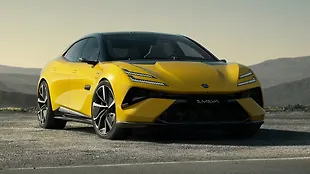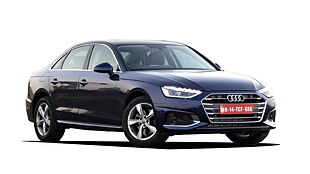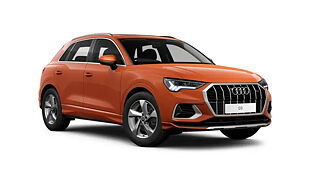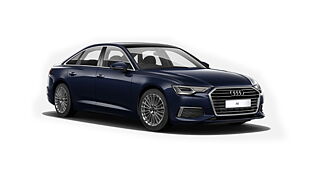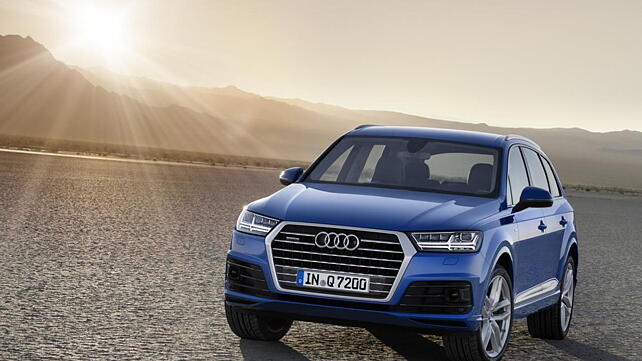
Audi has taken the wraps off the 2015 Q7 SUV. The car retains an all too familiar shape but is now a whopping 325kgs lighter and roughly 26 per cent more efficient than the outgoing model. The SUV tips the scales at 1995-kgs and has managed to pull off this task thanks to an all-new chassis and multi-material body composition.

The 2015 Q7’s fascia reflects the German automaker’s new design philosophy which now sees its cars moving away from rounded edges to sharper features. The headlights can now be configured in the form of Xenon’s, LEDs or matrix LED headlights. What appears to standard across all three headlight setups are the arrow- shaped LED daytime running lights with the top- spec models getting the integrated turn signals.
The side profile appears to have been retained from the outgoing model but the roofline has a sharper rake at the rear-end and it appears that the whole roof has also been lowered slightly. The bulging wheel arches add to the butch look of the vehicle while there is some contrast coloured moulding on the base of doors. The designs of the alloy wheels too are different now, though we expect that the company is likely to continue offering the older shapes depending on the market.

The rear, like the fascia, gets sharper lines giving a square appearance to the overall design but thanks to the forward rake of the glass does not look out of place. The entire mid-section below the tail lamps has been reworked and there are two bulge- like design elements on which the badging have been placed. Finally, the exhaust tail pipes have been changed and thanks to the new design philosophy are now flatter and rectangular in shape.
Moving over to the inside of the vehicle, we see that Audi has simplified the design by decreasing the size of the elements on the dashboard. The steering, instrument panel and climate control system all appear to be new while the screen has moved from being in the dashboard to the top of it and has now also become larger as well a touchscreen unit. It now uses Audi’s latest MMI system while offering support for Android Auto as well as Apple Car Play. Adding to this package is either a Bose system or a 23-speaker B&O surround sound system.

Keeping in conformity with the reducing design, the gear lever is now a smaller unit but other than that all elements look to be carried over and in the same places too. If the front gets so much, then the rear too looks to be a fun place. It can be configured with one or two 10.1-inch tablets that boast of a 32GB memory and full HD camera (for when that car selfie moment happens). Like its predecessors, the 2015 Q7 boasts of three rows of seats and lots of storage spaces.

In the engine department, the Q7 is being offered with the 3.0-litre TDI which in higher spec models produces 272bhp and 600Nm of torque. It is available in a lower spec config where it produces 218bhp and 500Nm of torque.
On the petrol front, the engine is a 3.0-litre unit that produces 333bhp and 440Nm of torque. There is also expected to be a 2.0-litre petrol engine which will produce 252bhp and 370Nm of torque. This engine will be offered only for the Asian markets.
This Q7 also debuts Audi’s new 3.0-litre plug-in hybrid diesel engine that will produce 373bhp and 700Nm of torque. All engines are offered with an 8-speed AT and Quattro system as standard. Audi is now also offering an all-wheel steering on some specific models.
Europe and America will get the Q7 in the period of June-August 2015 which means that we in India will get it by the end of next year. It is expected to be priced significantly higher than the current model and will compete with the VW Touraeg, Porsche Cayenne and the Land Rover Range Rover.

![Audi Q7 [2010 - 2015] Image Audi Q7 [2010 - 2015] Image](https://imgd.aeplcdn.com/272x153/cw/cars/audi/q7.jpg?q=80)
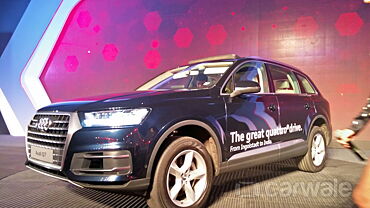









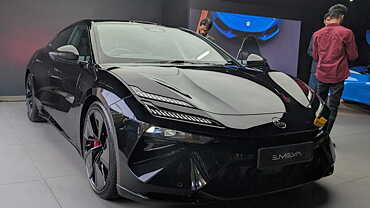


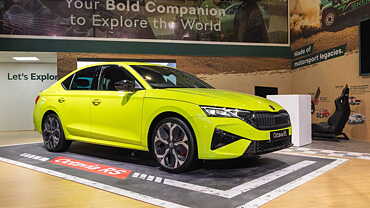
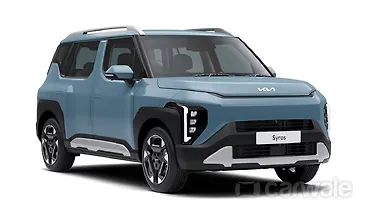
![Audi Q7 [2010 - 2015] Right Front Three Quarter Audi Q7 [2010 - 2015] Right Front Three Quarter](https://imgd.aeplcdn.com/199x112/ec/C0/A3/10825/img/m/Audi-Q7-Right-Front-Three-Quarter-48935_ol.jpg?v=201711021421&q=80)
![Audi Q7 [2010 - 2015] Right Rear Three Quarter Audi Q7 [2010 - 2015] Right Rear Three Quarter](https://imgd.aeplcdn.com/199x112/ec/C0/A3/10825/img/l/Audi-Q7-Right-Rear-Three-Quarter-18497.jpg?v=201711021421&q=80)
![Audi Q7 [2010 - 2015] Left Front Three Quarter Audi Q7 [2010 - 2015] Left Front Three Quarter](https://imgd.aeplcdn.com/199x112/ec/C0/A3/10825/img/l/Audi-Q7-Left-Front-Three-Quarter-18496.jpg?v=201711021421&q=80)
![Audi Q7 [2010 - 2015] Steering Wheel Audi Q7 [2010 - 2015] Steering Wheel](https://imgd.aeplcdn.com/199x112/ec/C0/A3/10825/img/l/Audi-Q7-Steering-Wheel-18498.jpg?v=201711021421&q=80)
![Audi Q7 [2010 - 2015] Steering Wheel Audi Q7 [2010 - 2015] Steering Wheel](https://imgd.aeplcdn.com/468x263/ec/8193/img/l/2237.jpg?v=201711021421&q=80)










